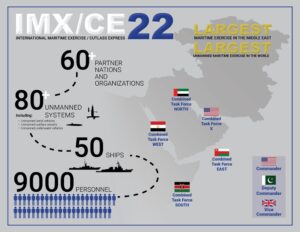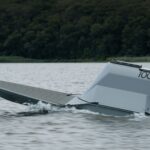
The Navy launched the biennial International Maritime Exercise (IMX) 2022 on Jan. 31 at the U.S. 5th Fleet headquarters in Bahrain The exercise consists of 50 ships, 9,000 personnel, 60 nations and organizations total, with 10 bringing their own unmanned systems. The Navy said IMX ‘22 is the largest unmanned exercise in the world with 80 unmanned systems. “This level of representation demonstrates shared resolve in preserving the rules-based international order. This is a unique opportunity to increase our capabilities…

 By
By 











